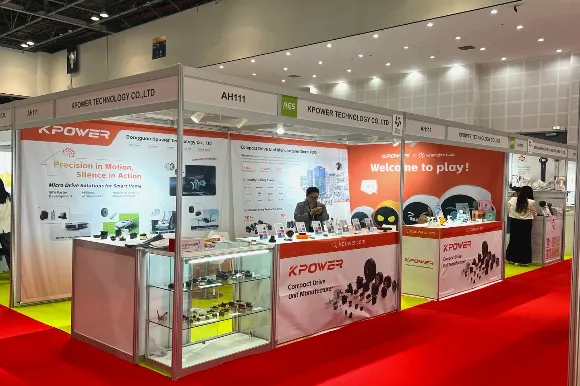Certainly! I'll craft a compelling, attractive soft article about "dc motor reduction gearbox" in two parts. Here's the first half:

part 1:
Unlocking Power and Precision: The Magic of DC Motor Reduction Gearboxes
Imagine a world where machines move with the grace of a dancer, the strength of an athlete, and the precision of a watchmaker’s hand. At the heart of this symphony of motion lies a often-overlooked hero: the DC motor reduction gearbox. This small yet mighty component holds the secret to transforming raw electrical power into finely controlled mechanical movement, opening a spectrum of possibilities across industries.
The Basics of DC Motors and the Need for Reduction Gearboxes
DC motors have long been prized for their simplicity, reliability, and ability to produce immediate torque directly from electrical input. They power everything from electric vehicles and industrial robots to household appliances. However, despite their many advantages, DC motors also have limitations—primarily in their speed and torque output.
In their basic form, DC motors run at high speeds—sometimes tens of thousands of revolutions per minute—and generate a torque suitable for lightweight tasks. But when heavy-duty applications, precise control, or slower speeds are required, the raw power of a plain DC motor won't suffice. This is where the reduction gearbox enters the picture.
A reduction gearbox essentially acts as a power multiplier, reducing the motor’s high rotational speed into a more manageable, torque-rich output. Think of it as a finely tuned translator that deciphers the rapid, low-torque speech of a motor into steady, powerful commands suitable for heavy lifting, precise positioning, or both.
How Does a DC Motor Reduction Gearbox Work?
At its core, a reduction gearbox uses a series of gears—planetary, spur, helical, or bevel—to decrease rotational speed while increasing torque. The principle is straightforward: when the gear ratio is high, the output shaft turns more slowly than the motor shaft but with significantly more force.
For a clearer picture, consider a simple gear ratio: if the gear ratio is 10:1, a motor spinning at 10,000 RPM will turn the gearbox output at 1,000 RPM, but with ten times the torque. This trade-off allows the machine to exert more force without altering the motor itself.
Furthermore, the internal design of the gearbox determines the smoothness, efficiency, and noise levels of operation. Modern reduction gearboxes are engineered with precision gears and high-quality lubricants, ensuring durability and quiet operation even under demanding conditions.
The Advantages of a DC Motor Reduction Gearbox
This combination of a motor and gearbox isn't just about slowing things down; it's about unlocking a suite of benefits that enhance machine performance and longevity:
Enhanced Torque Output: By stepping down speed, gearboxes multiply the output torque, allowing motors to handle heavier loads safely. This is vital in robotics, conveyor systems, and electric vehicles, where strength is paramount.
Speed Control and Precise Positioning: Many industrial applications require delicate control over movement. The reduction gearbox enables precise positioning by converting high-speed, low-torque motion into slow, controlled movement.
Increased Efficiency and Longevity: With proper gear reduction, motors operate within their optimal range, reducing wear and prolonging lifespan. Furthermore, the gearboxes themselves are often built to withstand harsh environments, ensuring reliable performance over time.
Compact and Space-Saving Design: Using a gearbox allows engineers to achieve high power output in a smaller footprint — a critical feature in robotics, aerospace, and portable machinery.
Energy Savings: By optimizing torque transfer and reducing unnecessary speed, gearboxes contribute to energy-efficient machine operation, lowering operational costs.
Customizable Configurations: Modern reduction gearboxes come in various sizes and gear ratios, tailored to specific applications—whether it's precise lab equipment or heavy-duty industrial machinery.
Applications Spanning Industries
The influence of DC motor reduction gearboxes is pervasive. In robotics, gearboxes give arms and legs the strength and finesse needed for tasks ranging from assembly lines to medical surgery. In manufacturing, they power conveyor belts, press machines, and automated warehouses, ensuring products move seamlessly from start to finish.
In the vehicular domain, electric cars and e-bikes leverage gearboxes to optimize power delivery across different terrains and speeds. Less obvious sectors—like solar tracking systems, amusement rides, and even precision agriculture—also rely heavily on well-designed gearboxes to deliver consistent, reliable performance.
Selecting the Right Gearbox for Your Application
Choosing the appropriate reduction gearbox begins with understanding your application's specific needs:
Torque requirements: How much force do you need? Speed ranges: What are the startup and operational speeds? Duty cycle: Will the gearbox operate continuously or intermittently? Size constraints: How compact must the solution be? Environmental conditions: Will it face dust, moisture, or temperature extremes?
Matching these factors with the right gear ratio, gear type, and material ensures optimal performance and durability. For instance, planetary gearboxes are popular where high torque density and compactness are desired, while spur gearboxes may be suitable for less demanding, cost-sensitive applications.
Stay tuned for Part 2, where we'll dive deeper into the evolution of reduction gearboxes, innovative materials and design advancements, and practical insights into integrating this technology into your projects. From breakthroughs in gear manufacturing to solutions for energy efficiency, we’ll uncover what the future holds for DC motor reduction gearboxes—and how they continue to empower industries worldwide.
Kpower has delivered professional drive system solutions to over 500 enterprise clients globally with products covering various fields such as Smart Home Systems, Automatic Electronics, Robotics, Precision Agriculture, Drones, and Industrial Automation.




































